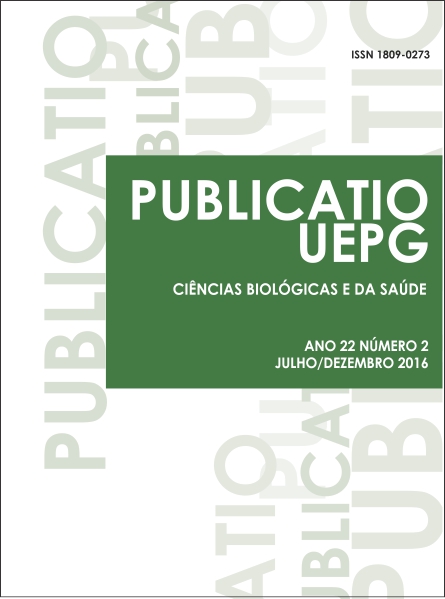STRUCTURE OF URBAN BIRD ASSEMBLAGES IN THE BRAZILIAN ATLANTIC RAIN FOREST
DOI:
https://doi.org/10.5212/publicatio%20uepg.v22i2.9334Palabras clave:
Atlantic Forest, Urban birds, Urban ecosystemsResumen
Urbanization causes structural modification in bird assemblages by selecting for species with broad ecological niches. The Atlantic Rain Forest in Brazil is one of the densest in human population and one of the most endangered hotspots of biodiversity on the planet. This work aimed to: (1) determine which bird species are most frequent in urban areas within the Atlantic Rain Forest in Brazil; (2) determine whether there is a pattern in the distribution of trophic groups, and (3) evaluate the taxonomic similarities among bird assemblages at the sampled sites. After a literature review, eleven different publications were obtained on this biome, with 321 species recorded. Approximately 18% of the total species records were considered frequent in urban habitats (in > 50% of the analyzed samples) and only four species (Tangara sayaca, Colaptes campestris, Passer domesticus, and Pitangus sulphuratus) occurred at all the sites studied. Insectivorous birds had the highest average frequency of occurrence in the studied assemblages (average richness 43.60 ± 2.94%), followed by omnivorous species (15.93 ± 2.35%). Piscivorous (2.77 ± 3.00%) and necrophagous birds (1.44 ± 0.93%) had the lowest occurrence rates. The taxonomic similarity among the different assemblages was always less than 50%. Lower averages of frequency and higher coefficients of variation in nectarivore, carnivore, piscivore, and necrophage guilds demonstrate that these groups are more sensitive to urbanization than others are.
Descargas
Descargas
Publicado
Número
Sección
Licencia

Este obra está licenciado com uma Licença Creative Commons Atribuição 4.0 Internacional.
Esta licença permite que outros distribuam, remixem, adaptem e criem a partir do seu trabalho, mesmo para fins comerciais, desde que lhe atribuam o devido crédito pela criação original. Este posicionamento está de acordo com as recomendações de acesso aberto da Budapest Open Access Initiative (BOAI).


